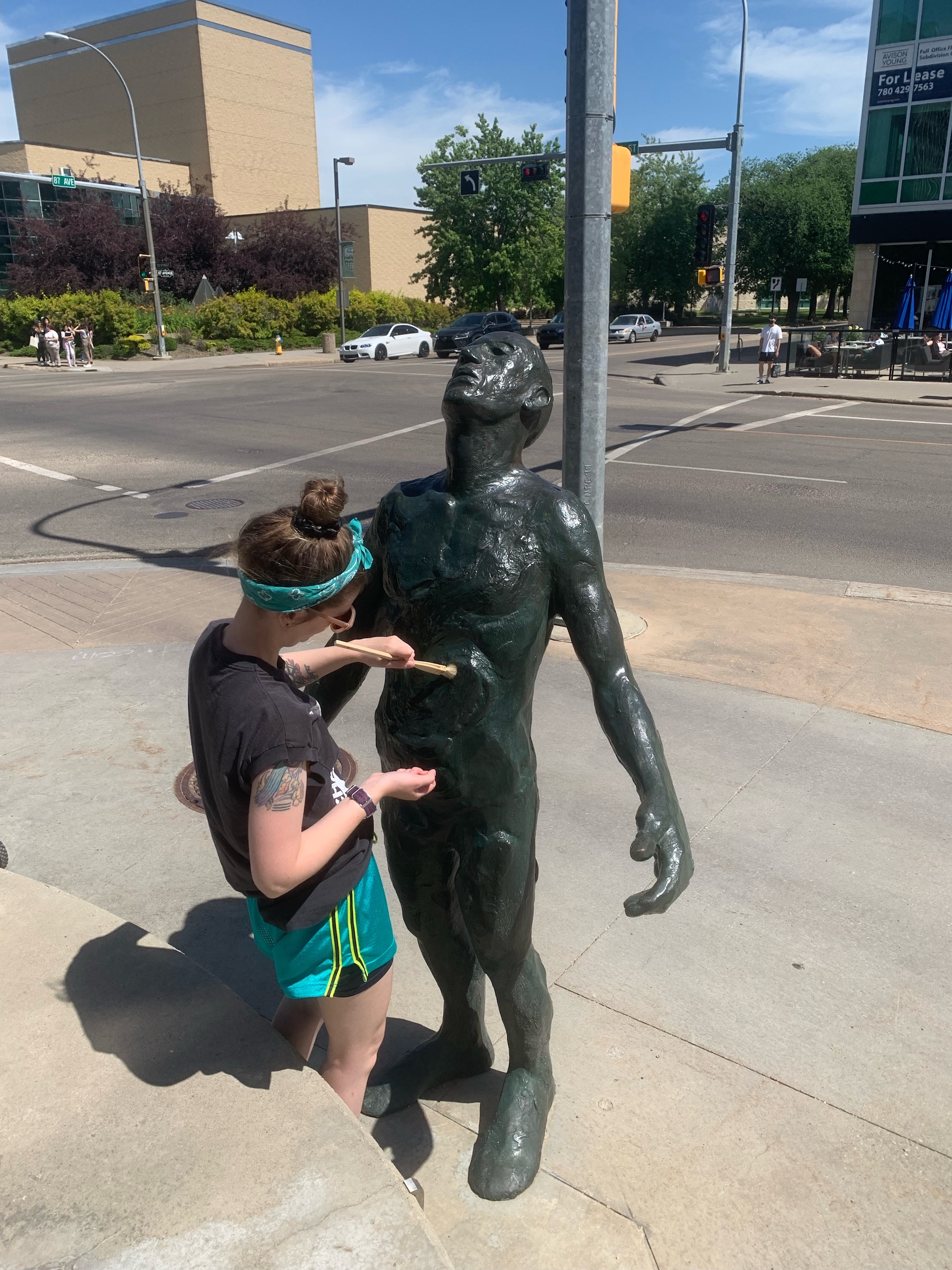UAM Summer Internship Blog 2022: Conservation Tactics

Brushing off an appreciative member of the UAM Art Collection. (InScope, 2015.7.1)
If you’ve been following along with my blog this summer it should be no real surprise that conservation is my main area of interest in museum work. Since beginning my internship with the U of A Museums, I’ve had the opportunity to pursue multiple conservation projects — such as working to reassess UAM’s Integrated Pest Management resources and cleaning the Jim van Es Marine Invertebrate and Malacology Collection display on the second floor of Biological Sciences — and learn more about how museums develop conservation practices like condition reporting.
As much as we like to think of museums as a place where objects and specimens sit in perfectly preserved condition for centuries to come, the reality is that aging affects us all — objects included! Materials like wood, paper, metal, and fabric all degrade at a nearly imperceptible rate. We only tend to notice that aging has affected them when items change colour or lose structural integrity. These changes are due to physical and chemical reactions caused by exposure to air, light, moisture, and temperature fluctuations. Although museum storage spaces are designed to slow material aging, it’s impossible to completely stop the process.
This is why the area of conservation is so important. Maintaining objects and specimens for future generations is a huge responsibility that requires participation from every staff member in a museum. Keeping a detailed record of an object’s current state, called a condition report, is essential for ensuring that all signs of aging are tracked. This also includes physical changes in objects; scuffs, cracks, gouges, rips, and any human-caused damage can all be traced through condition reports. Every time an object or specimen is moved — loaned to, or borrowed from, another institution for example— we must complete a condition report to note any instances of damage and aging. Tracking the condition of objects and specimens can also give us an indication if we need to improve or otherwise modify storage conditions to better protect them from further damage.
As most of the public art on campus is part of the University of Alberta Museums Art Collection, condition reports are also essential to tracking the weathering of sculptures, murals, and other structures over time. Vandalism, bird droppings, surface rusting, and biological growth all need to be remedied before the damage worsens, which is why we conduct condition reports of public art regularly. After assessing their condition, we can then go in with a plan for conservation cleaning and any other mitigation measures that may be needed.
I worked with a trained conservator to clean the various public art sculptures on campus. We used a soft dry brush followed by conservation-grade detergent, warm water, and cotton swabs to spot treat affected areas. It’s hard work that requires a clear understanding of how the cleaning solutions and methods will interact with the sculpture’s materials — as well as an ample amount of elbow grease and sunscreen — but spending half a day in the warm summer sun is always a welcome break from the office! After the cleaning is complete, we update our records with the conservation treatments that were performed as well as any further action that must be taken.
One major lesson I’ve learned from this internship is that museum work is much more active than you’d expect. I love having the opportunity to trade dress shoes for sneakers and get hands-on experience — often literally — with the collections. In my next entry I’ll be wrapping up my time with UAM and reflecting on the amazing journey I’ve been through this summer. Until next time!
Did you know: The UAM search site is constantly being updated with new collections and features available to browse! Check out this new list of Alberta flora specimens from the Vascular Plant Herbarium or peruse the historic Rosenberg quilt collection within the Anne Lambert Clothing and Textiles Collection.